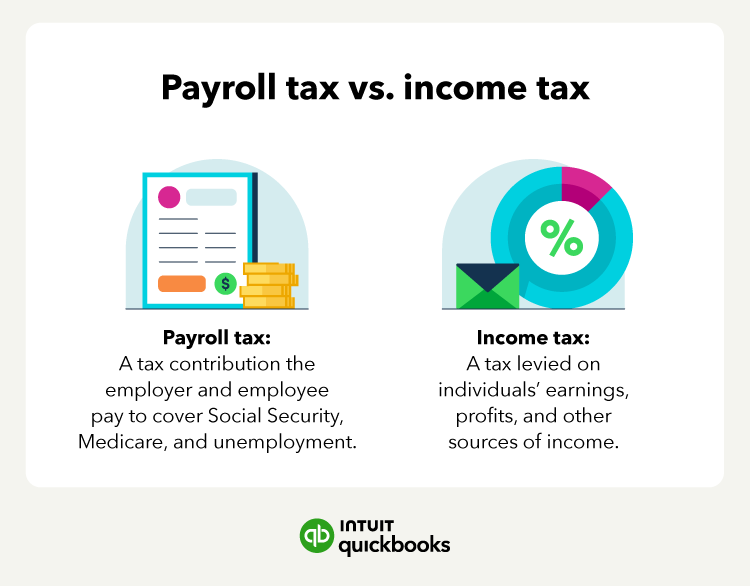Best practices for processing payroll and income taxes
When processing payroll, there are a couple of best practices to follow for handling payroll tax and income tax:
Consider other withholdings
Employers may have to withhold additional amounts that are not related to taxes, such as the worker’s share of health insurance premiums. To pay workers, you start with gross pay (unpaid wages) and deduct withholdings to calculate net pay. Some withholdings are for taxes, and others are not.
Not all workers have taxes withheld from pay, and you need to classify workers as either employees or independent contractors.
Categorize employees and independent contractors
A worker’s classification determines how the worker is treated for tax purposes. If the worker is an employee, you’ll incur payroll expenses. Independent contractors, on the other hand, are personally responsible for all tax withholdings, and the company’s only expense is the gross amount paid for services.
The Internal Revenue Service (IRS) provides a guide that explains how to classify workers to a particular category. The terms of your working relationship determine if the worker is considered an employee or an independent contractor.
The guidelines consider how much control the business has over what the worker does, who provides tools and supplies, and whether you have a written contract. If you have a large amount of control over how and when the worker performs services, they’re likely an employee.
Consider voluntary deductions
If your business offers benefits, you may withhold a portion of the costs from the worker’s pay. The employer’s share of the costs is a payroll expense. Here are some examples:
- Retirement plan: The employee contributions are deducted from pay and are not an employer expense. However, the employer’s share of contributions is a payroll expense for the business. Employer contributions are not deducted from pay.
- Health, dental, vision, and life insurance premiums: Premiums paid by the employer are not withheld from pay and are included as business expenses. The worker’s share of premiums is deducted from pay and is not a payroll expense.
- Union dues: Dues are deducted from pay and forwarded to the union on the worker’s behalf. The payments are not a payroll expense.
- Loan payments: If an employee has a loan from the business, repayments may be deducted from pay and are not a payroll expense.
The cost incurred to retain an accountant or a payroll service company is a business expense. Once you understand the payroll expenses you must incur, create a written procedure that documents how you process payroll.
Complete payroll tax forms
Payroll tax returns are complex, and the information you submit must be accurate. Make sure to submit the forms on time to avoid late filing fees. Here are the most common payroll tax forms businesses must submit:
- Form 941: Reports federal income taxes and FICA taxes to the IRS each quarter.
- Form 940: Employer’s annual federal unemployment (FUTA) tax return.
- Form W-3: Reports the total wages and tax withholdings for each employee using W-2 forms. Businesses file the report with the Social Security Administration annually.
- Form 1096: Reports the dollars paid to independent contractors using 1099 forms. Businesses file this report annually.
Accounting software allows you to generate these reports automatically.












